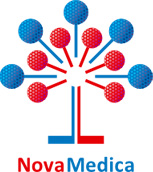
EMA releases human medicines highlights 2022 report
20 February 2023
Medicines which represented significant progress in their therapeutic areas have been listed in the European Medicines Agency’s Human Medicines Highlights 2022 report.
The European Medicines Agency (EMA) has released a report detailing its Human Medicines Highlights 2022.
The document contains an overview of the agency’s key recommendations in 2022. Included are figures on the authorisation of medicines and a selection of new treatments that represent significant progress in their therapeutic areas.
Last year, the EMA recommended 89 medicines for marketing authorisation by positive opinion. Of these, 411 had a new active substance which had never before been authorised in the European Union (EU).
Key figures regarding the authorisations of new medicines by the EMA included:
- Eight (PRIority MEdicines (PRIME)-designated medicines
- 21 Orphan medicines (for medicines that received orphan designation confirmation by 31st December 2022)
- Eight biosimilars
Medicines and new treatments which represented significant progress in their therapeutic areas in 2022 were:
Cancer
Carvykti for the treatment of adults with relapsed and refractory multiple myeloma (MM) who have received at least three prior therapies and whose cancer has worsened since they received their last treatment.
Ebvallo for a blood cancer called Epstein-Barr virus positive post-transplant lymphoproliferative disease. This medicine is intended for adults and children who develop this malignancy after receiving an organ or a bone marrow-transplantation.
Kimmtrak to treat adults with a form of eye cancer called uveal melanoma.
Haematology
Breyanzi is a gene therapy for adults with three subtypes of non-Hodgkin lymphoma (diffuse large B-cell lymphoma (DLBCL), primary mediastinal large B-cell lymphoma (PMBCL) and follicular lymphoma grade 3B (FL3B), whose cancer has come back or who have not responded to treatment after two or more lines of systemic therapy.
Hemgenix is the first gene therapy for severe and moderately severe haemophilia B, an inherited disorder characterised by an increased bleeding tendency due to a partial or complete deficiency in the activity of factor IX.
Roctavian for severe haemophilia A in adults who do not have factor VIII inhibitors (autoantibodies which make factor VIII medicines less effective) and no antibodies to adeno-associated virus serotype 5 (AAV5).
Metabolism
Mounjaro is a first-in-class medicine that activates both the GLP-1 and GIP receptors, leading to improved blood sugar control in patients with type II diabetes.
Xenpozyme is the first therapy for acid sphingomyelinase deficiency (ASMD), a rare genetic condition, historically known as Niemann-Pick disease type A, A/B and B.
Zokinvy is the first treatment for children with progeroid syndromes, an ultrarare genetic disease which causes premature aging and death.
Neurology
Upstaza is the first gene therapy for adults and children with aromatic L amino acid decarboxylase (AADC) deficiency, an ultra-rare genetic disorder affecting the nervous system.
Pneumology/ Allergology
Beyfortus is the first medicine for the prevention of respiratory syncytial virus (RSV) lower respiratory tract disease in newborns and infants during their first RSV season (when there is a risk of RSV infection in the community).
Human medicines highlights 2022 – additional details
Public health emergencies remained a key priority for the European Medicines Agency in 2022. The highlights document summarised the most important recommendations on vaccines and treatments for COVID-19 and for mpox (monkeypox).
Once a medicine is authorised by the European Commission (EC) and prescribed to patients, EMA and the EU Member States continuously monitor its quality and benefit-risk balance and take regulatory action when needed. These measures can include a change to the product information, the suspension or withdrawal of a medicine, or a recall of a limited number of batches. An overview of some of the most notable safety-related recommendations is also included in the document.
1 This news was updated to accurately reflect the number of medicines with a new active substance recommended for marketing authorisation.
PrintOur news
-
Merry Christmas and Happy New Year!
28 December 2024
-
NovaMedica team in the TOP 100 INFLUENTIAL PEOPLE IN THE PHARMACEUTICAL BUSINESS 2024
28 November 2024
-
05 November 2024
Media Center
-
Enhancing spectroscopy analysis with machine learning
03 February 2025
-
The production of new Russian “super antibiotic” to begin in Novosibirsk
03 February 2025
-
A Russian company has started producing 4 veterinary vaccines
31 January 2025
-
The government held its first meeting on the “New technologies for preserving health” project
31 January 2025